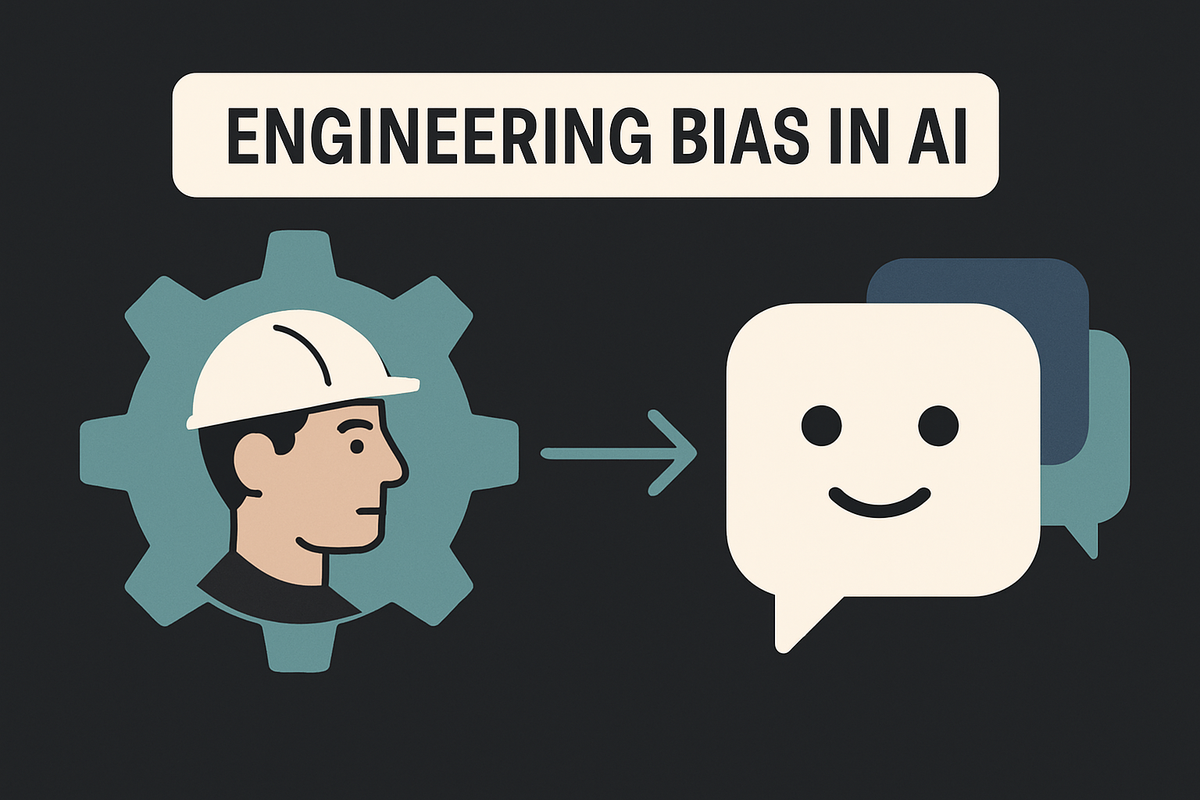Engineering Bias in AI: Why Prompt Engineering Is Failing Users and Hindering Adoption

Executive Summary
Generative AI holds transformative potential—but its promise remains locked behind an invisible wall: engineering bias. By prioritizing complex prompt engineering over intuitive, human-centered design, current AI systems are alienating mainstream users and hindering mass adoption.
Across industries, a growing body of evidence reveals deep frustration with prompt-driven interfaces. From business leaders to UX designers, educators, and everyday users, the message is clear: AI expects humans to think like machines, rather than enabling machines to understand humans.
The consequences are real—and measurable:
- 77% of employees report that generative AI tools have increased their workload, not reduced it. Most give up after early failures. [Upwork, 2024]
- Women are 13% less likely than men to adopt generative AI. Adoption drops even further among professionals aged 45–65. [NY Fed, 2024]
- Enterprises investing in AI report limited ROI, often misattributing failure to "user resistance"—when the real issue is unintuitive, engineering-centric UX. [McKinsey, 2023]
This white paper synthesizes expert critiques, real-world case studies, and research findings to argue for a necessary shift: from engineering-centric prompting to natural, adaptive, and human-centered AI interaction.
Key Themes and Expert Consensus
1. Prompt Engineering Is a Usability Barrier, Not a Skill
“Prompting is a poor user interface for generative AI systems, which should be phased out as quickly as possible.”
—Dr. Meredith Ringel Morris, Microsoft Research & ACM Fellow
[Source]
HCI experts like Morris warn that prompt interfaces were never designed for mainstream users. They mimic debugging tools, not conversations. The result? Users are burdened with crafting arcane, engineer-style prompts just to get reliable output. This is not natural language—it’s a technical workaround.
Designers agree. UX lead Eleana Gkogka observes that users often “won’t engage with AI at all” if they aren’t sure what it can do or how to ask. [Source]
2. Real-World User Frustration and Abandonment
“Instead of helping, AI tools are making work more complicated.”
—Anonymous workplace user [Source]
Upwork’s 2024 study found 77% of workers felt generative AI increased, rather than reduced, their workload. Why? Because tools promised to be intuitive instead require constant prompt tweaking, trial-and-error, and fact-checking—wasting time rather than saving it.
When employees don’t know how to “talk to the AI,” many stop using it entirely. This is not a failure of motivation—it’s a failure of interface.
3. Exclusion of Women and Senior Professionals
“A lot of AI power remains locked behind a usability barrier.”
—Nielsen Norman Group [Source]
Generative AI adoption is skewed toward younger, male, technical users. The gender gap in U.S. AI usage is 13%, with adoption among women over 55 significantly lower. [NY Fed, 2024]
Senior professionals often find AI tools alienating. Executive Peter Hughes notes that prompt engineering has become a “substantial barrier to adoption,” requiring time, expertise, and troubleshooting beyond what most professionals can afford. [Source]
4. Massive Economic Costs from Poor UX
McKinsey estimates $4.4 trillion in productivity potential from generative AI. [Source] Yet only a fraction is being realized—because the tools are too hard to use.
A Harvard study finds that prompt engineering knowledge explains 70% of the gender gap in AI usage. [Source] Without user-friendly design, billions in potential output are lost annually. These gaps affect small businesses, healthcare, education, and government—sectors with low technical fluency but high potential for AI benefit.
5. The Path Forward: Human-Centered, Conversational AI
“The AI must adapt to users—not the other way around.”
—Nielsen Norman Group [Source]
Experts unanimously advocate for moving away from blank prompt boxes and toward guided, conversational interfaces:
- Interactive clarification: AI that asks questions when unsure
- Guided inputs: Templates, suggestions, and visual scaffolding
- Context-aware interactions: AI that understands the user’s goal, not just their command
- Explainability: Clear outputs and confidence indicators to build trust
Harvard Business Review (2025) affirms that the most common real-world AI use case today is support through intuitive, conversational interaction—not precision prompting. [HBR, 2025]
Conclusion
The future of AI depends not on faster models or better prompts—but on better conversations.
Prompt engineering is a vestige of a technical subculture that no longer serves the needs of the early majority. To cross the chasm to mass adoption, we must shed engineering bias and embrace truly human-centered design.
By enabling AI to speak our language—not the other way around—we unlock AI’s full promise: usable, trustworthy, and powerful for everyone.
References and Further Reading
- Meredith Ringel Morris: Prompting Considered Harmful (CACM)
- Upwork & The Casual Reader: Why Workplace AI Kind of Sucks
- Federal Reserve SCE: Generative AI Usage by Gender and Age
- Peter Hughes: Why Prompt Engineering Is a Barrier (LinkedIn)
- Nielsen Norman Group: 6 Types of Conversations with Generative AI
- Harvard Business Review: How People Actually Use Generative AI
- McKinsey: Economic Potential of Generative AI
- Harvard Business School: Gender Gap in AI Usage
- UX Design: Designing for AI Assistants (Eleana Gkogka)